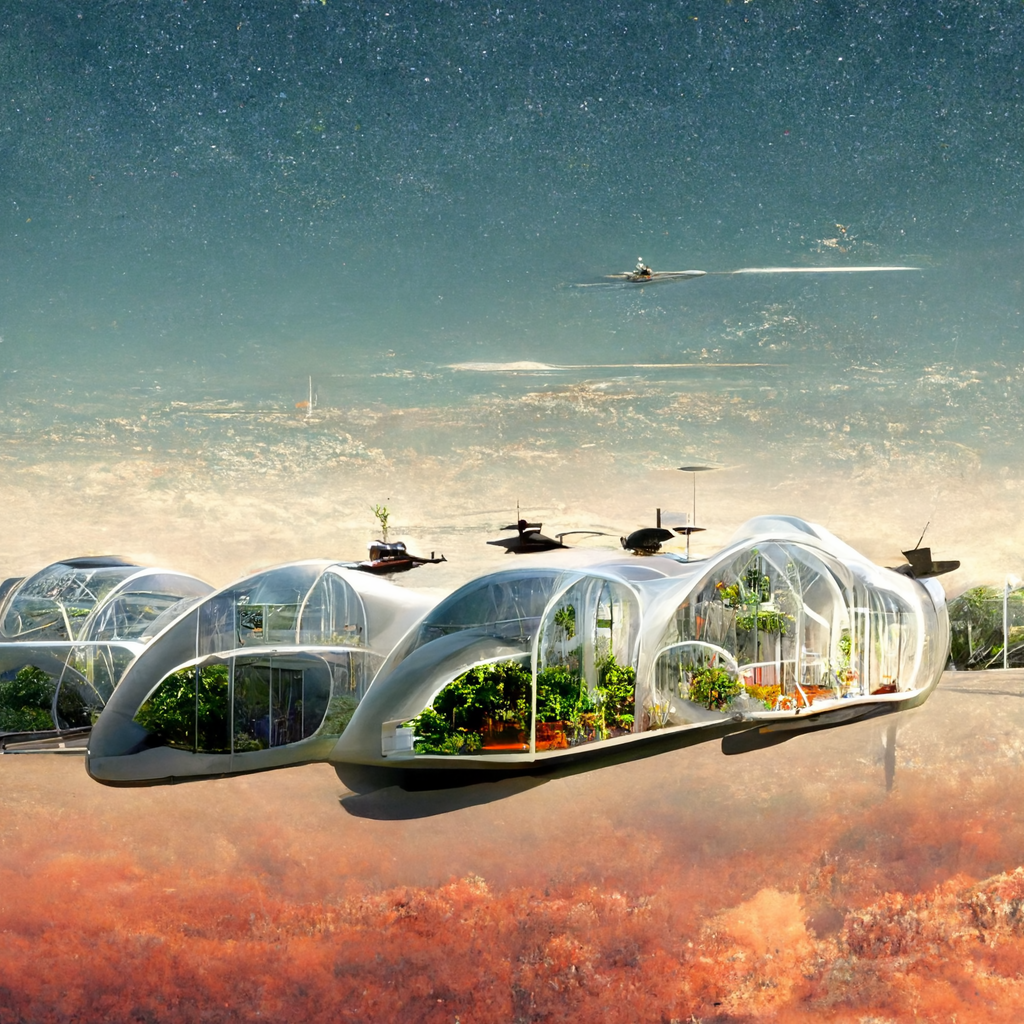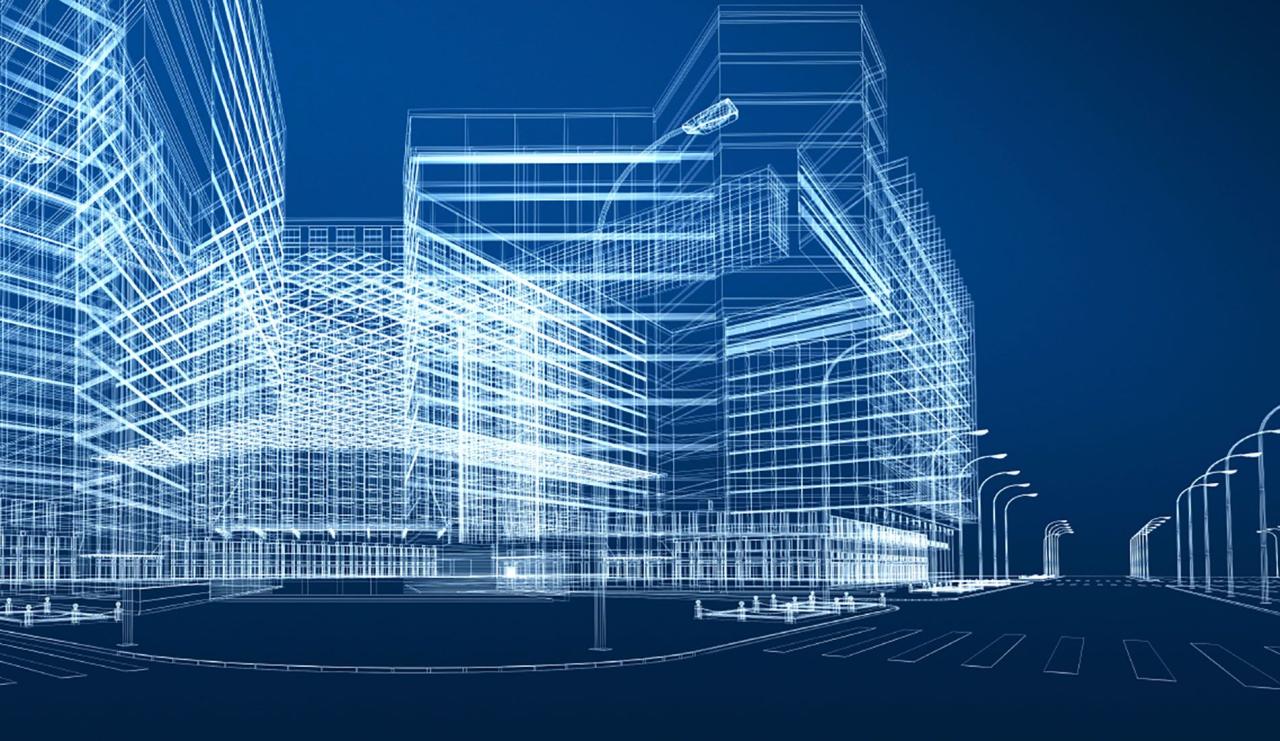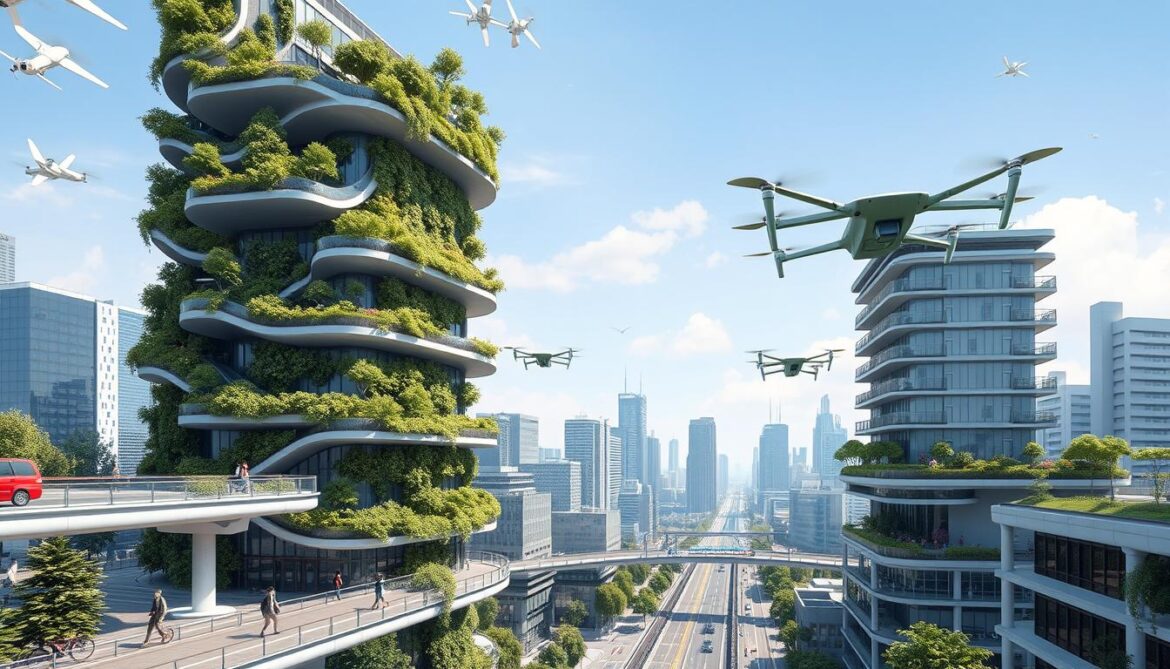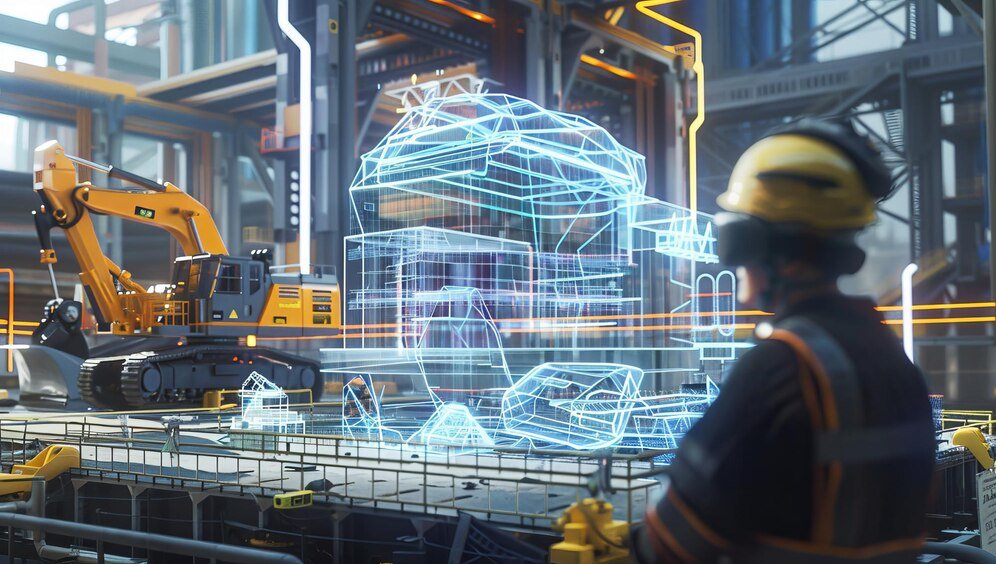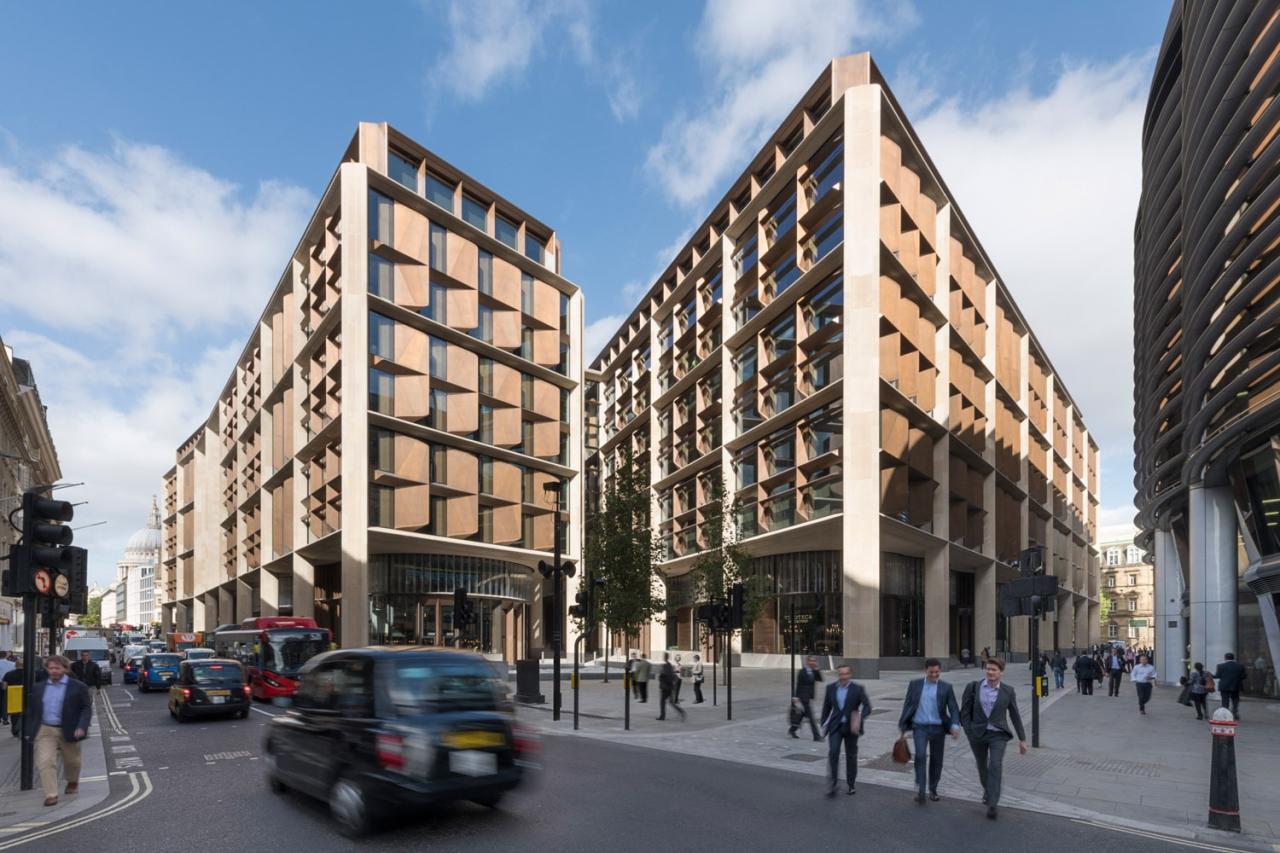The convergence of artificial intelligence (AI) and design is rapidly ushering in a new era for various industries, from architecture and engineering to product development and urban planning. AI-powered design is no longer a futuristic concept; it’s a present-day reality transforming how we conceive, analyze, and actualize the structures, products, and environments around us. By leveraging machine learning algorithms, generative design, and advanced data analytics, AI tools empower designers to explore unprecedented possibilities, optimize complex systems, and create solutions that are more efficient, sustainable, and human-centric than ever before. This synergy is truly the blueprint for building tomorrow’s world, promising innovations that were once relegated to the realm of science fiction.
AI’s Impact on Design Paradigms
To fully grasp the profound implications of AI in design, it’s essential to first understand the limitations of traditional design processes and how AI is fundamentally reshaping them.
A. The Constraints of Traditional Design
For centuries, design has largely been a human-centric endeavor, relying on intuition, experience, and iterative manual processes. While invaluable, this approach comes with inherent limitations when facing the increasing complexity and demands of the modern world.
- Time-Consuming Iteration: Traditional design often involves numerous cycles of conceptualization, manual drafting, physical prototyping, and testing. Each iteration can be time-consuming and expensive, slowing down the development process.
- Limited Exploration: Human designers, no matter how brilliant, are constrained by cognitive biases and the sheer volume of possibilities. Exploring a vast design space to find optimal solutions is often impractical or impossible manually, leading to potentially sub-optimal outcomes.
- Complexity Management: Modern designs, particularly in fields like large-scale architecture or intricate product engineering, involve managing an overwhelming number of variables, constraints, and performance criteria (e.g., structural integrity, energy efficiency, material properties). Manual optimization of these complex interdependencies is exceedingly difficult.
- Data Blind Spots: Designers often rely on past experience and limited data sets. Analyzing vast amounts of real-world performance data, user feedback, or environmental factors to inform design decisions can be challenging without advanced computational tools.
- Resource Inefficiency: Sub-optimal designs can lead to wasted materials, increased energy consumption, higher manufacturing costs, and less sustainable solutions, all stemming from the inability to perfectly balance competing design objectives.
B. The Dawn of AI-Powered Design
AI-powered design leverages the computational power of artificial intelligence to overcome these traditional limitations, introducing capabilities that redefine the design workflow.
- Generative Design: This is perhaps the most revolutionary aspect. Instead of directly designing a solution, a designer defines the problem by setting parameters, constraints, and objectives (e.g., strength, weight, cost, material). AI algorithms then rapidly generate thousands, or even millions, of design variations that meet these criteria. The designer then curates and refines the most promising options.
- Intelligent Automation: AI automates repetitive or computationally intensive design tasks, freeing human designers to focus on higher-level creative problem-solving and strategic decision-making. This includes tasks like layout optimization, component placement, or material selection.
- Predictive Analytics for Performance: AI models can simulate and predict the performance of designs under various conditions (e.g., structural load, thermal performance, aerodynamic efficiency) long before physical prototyping. This allows for early identification of flaws and optimization for desired outcomes.
- Data-Driven Insights: AI can process and derive insights from enormous datasets—from historical project data and material properties to real-time sensor data from existing structures or user interaction patterns. These insights inform design choices, leading to more empirically sound and user-centric solutions.
- Optimization and Multi-Objective Balancing: AI excels at multi-objective optimization, balancing competing requirements (e.g., minimizing cost while maximizing sustainability and structural integrity) to arrive at truly optimal solutions that human designers might miss.
This integration of AI into the design process transforms it from a purely intuitive craft into a symbiotic collaboration between human creativity and computational intelligence, opening up unprecedented avenues for innovation.
Core Principles and Mechanisms of AI-Powered Design
The implementation of AI in design relies on several core principles and computational mechanisms that drive its transformative capabilities.
A. Data as the Foundation
At its heart, AI-powered design is fundamentally data-driven. The quality and quantity of data fed into AI models directly impact the intelligence and effectiveness of the design output. This data can include:
- Historical Design Data: Past project designs, their performance metrics, and build costs.
- Material Properties: Comprehensive databases of material strengths, thermal conductivity, environmental impact, and cost.
- Environmental Data: Climate patterns, seismic activity, sunlight exposure, wind loads for architectural design.
- User Behavior Data: Clickstreams, interaction patterns, demographic data for product and UI/UX design.
- Sensor Data: Real-time performance data from existing structures or products (e.g., energy consumption, structural stress, temperature).
Clean, relevant, and well-structured data is crucial for training effective AI models.
B. Machine Learning Algorithms
Various machine learning (ML) algorithms form the computational backbone of AI-powered design:
- Generative Adversarial Networks (GANs): Used to create new design variations by having two neural networks (a generator and a discriminator) compete against each other. The generator creates designs, and the discriminator tries to identify if they are real or fake, iteratively improving the generated outputs.
- Reinforcement Learning: Algorithms learn to make optimal decisions by trial and error within a simulated environment, often used for optimizing complex layouts or control systems where the AI receives rewards for desired outcomes.
- Evolutionary Algorithms (e.g., Genetic Algorithms): Inspired by natural selection, these algorithms iteratively evolve a population of designs. Designs that perform well according to defined fitness functions are “bred” (combined and mutated) to create new generations of designs, leading to increasingly optimized solutions.
- Deep Learning (Neural Networks): Used for pattern recognition, predictive modeling, and complex feature extraction from large datasets, enabling tasks like image recognition for defect detection in manufacturing or predicting structural failure.
C. Parametric and Generative Modeling
While parametric modeling allows designers to control designs through parameters, generative design takes this a step further by using AI to generate the forms themselves based on design intent.
- Parametric Design: Allows designers to define relationships between design elements using parameters. Changing a parameter automatically updates the entire design. This forms a strong foundation for AI integration.
- Topology Optimization: A specific type of generative design that optimizes the distribution of material within a given design space for a set of loads and boundary conditions. It aims to maximize performance (e.g., stiffness) while minimizing material usage, resulting in organic, often nature-like forms.
- Form-Finding Algorithms: Algorithms that explore a wide range of shapes and forms to find the most efficient or aesthetically pleasing solution based on specific criteria.
D. Simulation and Digital Twins
AI enhances simulation capabilities, allowing for more accurate and rapid predictions of how a design will perform in the real world. The concept of a digital twin is particularly powerful here:
- Digital Twin: A virtual replica of a physical object, system, or process. AI analyzes real-time data from sensors on the physical asset, updates the digital twin, and uses this information to predict performance, identify potential issues, or optimize operations. In design, a digital twin can be used to simulate the long-term performance of a building, a bridge, or a machine, informing future design improvements or maintenance schedules.
E. Human-AI Collaboration Interface
Crucially, AI-powered design is not about replacing human designers but augmenting them. The interface between human and AI is key:
- Intuitive Inputs: Designers provide high-level goals, constraints, and preferences rather than low-level geometry.
- Interactive Exploration: AI tools present generated options in a user-friendly way, allowing designers to filter, sort, and iterate on promising designs.
- Feedback Loops: Designers provide feedback to the AI on preferred designs, helping the algorithms learn and refine future generations. This symbiotic relationship leverages the strengths of both human creativity and AI’s computational power.
Transformative Applications of AI-Powered Design Across Industries
AI-powered design is not confined to a single domain; its principles are broadly applicable and are revolutionizing numerous industries, leading to unprecedented levels of efficiency, innovation, and sustainability.
A. Architecture, Engineering, and Construction (AEC)
The AEC industry is undergoing a significant transformation with AI-powered design, moving towards more intelligent, sustainable, and efficient building practices.
- Generative Architecture: AI can generate floor plans, building layouts, and structural designs that optimize for factors like daylighting, energy efficiency, material usage, and space utilization, potentially finding novel solutions unforeseen by human designers.
- Structural Optimization: AI-driven topology optimization can design lightweight yet incredibly strong structural components, reducing material consumption (e.g., for complex trusses or bridge sections) while enhancing performance.
- Parametric Facade Design: AI can generate and optimize complex building facades that respond to environmental conditions (sun, wind) for energy performance and aesthetic appeal.
- Construction Planning and Robotics: AI optimizes construction schedules, resource allocation, and logistics. It also powers robotic systems for tasks like bricklaying, welding, or assembly, improving precision and safety.
- Smart Building Integration: Designing buildings with integrated AI for adaptive climate control, predictive maintenance of systems (HVAC, elevators), and intelligent energy management, making structures more sustainable and responsive.
B. Product Design and Manufacturing
From consumer electronics to automotive parts, AI is streamlining product development, making products more efficient, robust, and manufacturable.
- Component Optimization: AI can optimize the internal geometries of parts (e.g., brackets, engine components) for minimal weight and maximum strength, often leading to organic, bionic forms that are highly efficient for additive manufacturing (3D printing).
- Material Selection: AI assists in selecting optimal materials based on desired properties (strength, heat resistance, cost, sustainability) from vast material databases.
- Design for Manufacturability (DFM): AI can analyze designs for manufacturability, identifying potential issues or suggesting modifications to reduce production costs and time, or improve assembly efficiency.
- User Experience (UX) Design: AI analyzes user interaction data to suggest optimal UI layouts, personalize experiences, and identify friction points in a product’s interface.
- Rapid Prototyping and Simulation: AI-enhanced simulation tools quickly predict product performance, reducing the need for costly physical prototypes and accelerating the design-test-iterate cycle.
C. Urban Planning and Smart Cities
AI is becoming instrumental in designing and managing the complex ecosystems of modern cities, leading to smarter, more livable, and sustainable urban environments.
- Traffic Optimization: AI analyzes traffic patterns to design optimal road networks, intelligent traffic light systems, and public transport routes that alleviate congestion and improve flow.
- Sustainable Urban Layouts: AI can model and optimize urban layouts for factors like pedestrian flow, green space allocation, waste management efficiency, and solar energy capture, contributing to more sustainable cities.
- Resource Allocation: AI helps city planners optimize the placement of critical infrastructure such as emergency services, public utilities, and community centers based on population density and projected needs.
- Disaster Resilience: AI models can simulate natural disaster impacts (floods, earthquakes) on urban infrastructure, informing resilient design strategies and evacuation plans.
- Public Safety and Monitoring: Designing urban surveillance systems that use AI for anomaly detection, optimizing camera placement, and improving response times for public safety incidents.
D. Fashion and Textile Design
Even in creative industries like fashion, AI is offering new tools for innovation.
- Generative Clothing Designs: AI can generate novel patterns, textures, and even full garment designs based on trends, material properties, and target demographics.
- Material Optimization: Identifying sustainable or performance-enhanced fabrics based on desired properties.
- Mass Customization: Designing individualized garments at scale based on customer body scans and preferences, optimizing production.
Unlocking the Advantages of AI-Powered Design
The strategic adoption of AI in design offers a multitude of compelling benefits that directly address the limitations of traditional methods, empowering organizations to achieve unprecedented levels of innovation and efficiency.
A. Accelerate Design Cycles and Time-to-Market
One of the most immediate and profound benefits of AI-powered design is its ability to dramatically accelerate design cycles. By automating repetitive tasks, rapidly generating design variations, and conducting simulations in minutes rather than days, AI significantly reduces the time from concept to viable prototype. This faster iteration directly translates to a reduced time-to-market for new products, buildings, or services, giving businesses a critical competitive edge.
B. Discover Novel and Optimized Solutions
AI’s capacity to explore vast design spaces and perform multi-objective optimization allows designers to discover novel solutions that human intuition alone might miss. These AI-generated designs are often structurally more efficient, use fewer materials, exhibit superior performance characteristics, or present entirely new aesthetic possibilities. This leads to truly innovative and optimized outcomes that push the boundaries of what’s possible.
C. Enhance Efficiency and Reduce Costs
By automating computationally intensive tasks, optimizing material usage through generative design, and predicting performance issues early in the design phase, AI significantly enhances efficiency and reduces costs. Less material waste, fewer physical prototypes, reduced manual labor for iterative changes, and fewer design flaws caught late in the process all contribute to substantial savings in both resources and expenditure.
D. Improve Performance and Functionality
AI-powered design enables the creation of products and structures with superior performance and functionality. Whether it’s designing a part that can withstand extreme loads with minimal weight, a building that maximizes natural light while minimizing energy consumption, or an interface that is intuitively easy for users, AI helps in fine-tuning designs to meet and exceed specific performance targets.
E. Foster Greater Sustainability
The ability of AI to optimize material usage through topology optimization and to simulate environmental performance is critical for fostering greater sustainability. AI-designed structures and products can have reduced carbon footprints, minimize waste, and consume less energy over their lifecycle, directly contributing to environmental conservation and corporate social responsibility goals.
F. Democratize Complex Design
While advanced, AI tools are making sophisticated design capabilities more accessible. By abstracting away much of the underlying complexity, AI can potentially democratize complex design, allowing designers with less specialized engineering knowledge to create highly optimized solutions. It empowers them to focus on creative problem-solving and higher-level strategic thinking.
G. Data-Driven Decision Making
AI infuses the design process with data-driven decision-making. Instead of relying solely on intuition or anecdotal evidence, designers can leverage AI to analyze vast datasets, identify trends, predict outcomes, and validate design choices with empirical evidence. This leads to more robust, reliable, and user-centric designs.
Challenges and Considerations in Adopting AI-Powered Design
Despite its immense potential, the adoption of AI-powered design is not without its hurdles. Organizations must be prepared to navigate these complexities to realize the full benefits.
A. Data Quality and Availability
The effectiveness of AI models is heavily dependent on the quality and availability of data. Poorly structured, incomplete, biased, or insufficient data can lead to flawed designs or inaccurate predictions. Curating, cleaning, and labeling large datasets for specific design problems is a significant and often time-consuming challenge. Moreover, access to proprietary design data can be restricted, limiting the training pool for AI.
B. Computational Resources and Cost
Running complex AI algorithms, especially for generative design or high-fidelity simulations, requires substantial computational resources. This can involve powerful GPUs, specialized cloud infrastructure, and significant energy consumption. The associated costs, both for hardware and cloud services, can be substantial, particularly for smaller firms.
C. Integration with Existing Workflows and Tools
Many design firms and manufacturing companies have established workflows and rely on existing CAD/CAM/BIM software. Integrating new AI tools and methodologies seamlessly into these existing workflows can be challenging. It requires interoperability between different software platforms, data format conversions, and often, a re-evaluation of established processes.
D. Explainability and Trust in AI Decisions
Designers need to understand why an AI algorithm generated a particular design or made a specific optimization. The “black box” nature of some advanced AI models can lead to a lack of explainability and trust. For critical applications (e.g., structural engineering), designers must be able to validate and justify AI suggestions, making explainable AI (XAI) a crucial area of research and development.
E. Skill Gap and Training
Implementing AI-powered design requires a new set of skills. Designers need to understand how to frame problems for AI algorithms, interpret AI outputs, and effectively collaborate with AI tools. Engineering teams need expertise in machine learning, data science, and cloud computing. Bridging this skill gap through training and hiring is a significant investment.
F. Ethical Considerations and Bias
AI models learn from data, and if the training data contains historical biases (e.g., gender, racial, or cultural biases in design preferences, or biases towards certain materials), these biases can be perpetuated or even amplified in the AI’s generated designs. Addressing ethical considerations and potential biases in AI algorithms is critical to ensure fair, inclusive, and responsible design outcomes. The impact of AI on job roles also needs ethical consideration.
G. Legal and Intellectual Property Issues
When an AI generates a novel design, questions of legal ownership and intellectual property (IP) can arise. Who owns the copyright or patent for an AI-generated design – the human who set the parameters, the company that developed the AI, or the AI itself? These legal frameworks are still evolving and pose complex challenges.
H. Over-Reliance and Loss of Intuition
A potential risk is over-reliance on AI tools, leading to a diminished role for human intuition, creativity, and critical thinking. Designers must remain in control, using AI as a powerful assistant rather than a replacement for their expertise. The balance between automation and human oversight is delicate and crucial for optimal outcomes.
Best Practices for Implementing AI-Powered Design
To successfully integrate AI into design workflows and mitigate the associated challenges, organizations should adopt a strategic and disciplined approach.
A. Start with Well-Defined Problems
Don’t try to automate the entire design process at once. Begin by identifying well-defined, repetitive, or computationally intensive problems within your design workflow that AI can effectively solve. Examples include optimizing specific components, generating initial layout options, or performing rapid simulations. A focused approach yields clearer results and builds internal expertise.
B. Invest in High-Quality Data Infrastructure
Recognize that data is the lifeblood of AI. Invest in robust data collection, storage, and management infrastructure. Establish processes for data cleaning, labeling, and versioning. Ensure data privacy and security are paramount. The more relevant, clean, and diverse data you have, the more effective your AI design tools will be.
C. Foster Human-AI Collaboration
Position AI as an augmentation tool, not a replacement for human designers. Train your design teams on how to effectively collaborate with AI—how to input parameters, interpret outputs, and iterate on AI-generated suggestions. Emphasize that human creativity, intuition, and ethical judgment remain indispensable, guiding and refining AI’s computational power.
D. Adopt an Iterative and Agile Approach
AI-powered design should be implemented using an iterative and agile methodology. Start with a minimal viable product (MVP) or a pilot project, gather feedback, learn from results, and continuously refine both the AI models and the integration with design workflows. This allows for flexibility and adaptation as the technology and your understanding evolve.
E. Prioritize Explainable AI (XAI) and Transparency
For critical design applications, prioritize explainable AI (XAI) techniques. Choose AI models and tools that can provide insights into their decision-making processes. Transparency helps build trust, allows designers to validate the logic, and is crucial for debugging and compliance. Document the parameters and constraints used to generate designs.
F. Build a Cross-Functional Team
Successful AI-powered design initiatives require collaboration across disciplines. Assemble cross-functional teams that include designers, engineers, data scientists, AI/ML experts, and domain specialists. This diverse expertise ensures that both the creative and technical aspects of AI-powered design are addressed effectively.
G. Implement Robust Validation and Testing
Even with AI, rigorous validation and testing of generated designs are crucial. This includes traditional simulation, physical prototyping (perhaps of a reduced number of optimal designs), and real-world testing. Continuously feed performance data back into the AI models to improve their accuracy and effectiveness over time, creating a virtuous feedback loop.
H. Address Ethical and Legal Considerations Proactively
Establish clear ethical guidelines for AI use in design, addressing potential biases, fairness, and accountability. Stay informed about evolving legal and intellectual property (IP) frameworks related to AI-generated content. Consider internal policies on ownership and responsibility for AI-assisted designs from the outset.
I. Invest in Continuous Learning and Skill Development
The field of AI is rapidly advancing. Organizations must commit to continuous learning and skill development for their design and engineering teams. Provide ongoing training in AI principles, specific AI design tools, and the ethical implications of AI, ensuring your workforce remains at the forefront of this evolving discipline.
The Future Trajectory of AI-Powered Design
The integration of AI into design is still in its nascent stages, yet its trajectory suggests a future where AI becomes an even more pervasive and sophisticated partner in the creative process.
A. Hyper-Personalization and Mass Customization
AI will enable unprecedented levels of hyper-personalization and mass customization in product and architectural design. Imagine homes designed precisely for an individual’s daily routines, light preferences, and energy consumption habits, or products tailored down to the molecular level for specific performance requirements and aesthetic tastes, all generated and manufactured on demand.
B. Autonomous Design Systems
While human oversight will remain critical, we may see the emergence of more autonomous design systems for less complex or highly constrained problems. These systems could automatically generate, optimize, and even validate designs with minimal human intervention, particularly for repetitive tasks or in environments with very specific performance criteria.
C. Multi-Modal Design and Real-World Feedback Loops
AI will process and integrate data from even more diverse sources, moving beyond traditional CAD models. This includes multi-modal design integrating sensory data (e.g., soundscapes for urban planning, tactile feedback for product design), alongside real-time performance data from deployed designs. This continuous feedback loop will enable AI models to learn from real-world usage and improve subsequent designs autonomously.
D. AI in Sustainable and Regenerative Design
AI will become an even more powerful tool for sustainable and regenerative design. Beyond optimizing for efficiency, AI could design systems that actively regenerate resources, purify air and water, or restore ecosystems. This includes designing self-healing materials, closed-loop manufacturing processes, and highly efficient energy systems that operate in harmony with nature.
E. Human-Computer Co-Creation at its Zenith
The future will see the zenith of human-computer co-creation, where the line between human and AI contribution blurs. AI will act as an intelligent co-pilot, anticipating designer needs, proactively suggesting improvements, and even initiating creative explorations based on subtle cues, leading to truly collaborative and innovative breakthroughs where the “author” is a collective intelligence.
Conclusion
AI-powered design stands as a pivotal force shaping the future of how we build and interact with our world. By transcending the limitations of traditional methods, AI empowers designers to explore an expanded universe of possibilities, yielding solutions that are not only aesthetically compelling but also profoundly optimized for performance, cost, and sustainability. From generating hyper-efficient architectural forms to personalizing product experiences at scale, AI is rapidly moving from an experimental tool to an indispensable partner in the creative and engineering processes.
While the journey towards widespread adoption of AI in design requires navigating challenges related to data, computational resources, and the crucial human-AI interface, the benefits are undeniable. Organizations that strategically invest in understanding and implementing AI-powered design principles, prioritize ethical considerations, and foster a collaborative environment between human ingenuity and artificial intelligence will be the true architects of tomorrow’s world, crafting smarter, more efficient, and more sustainable solutions for generations to come. This synergy promises to unlock unprecedented levels of innovation, making the previously impossible, possible.

